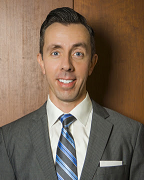Larres and Kamin: Coronavirus Raises Compensability Questions for Employers
Wednesday, March 4, 2020 | 0
The outbreak of Covid-19 coronavirus has the workers’ compensation community asking how one determines compensability of a virus with a source of infection that could literally be anywhere and everywhere.

Louis Larres
Employers, carriers and administrators are finding themselves in a unique position as public health officials rush to identify cases, quarantine and test people who are exposed to the virus, and treat sick patients. This raises once-in-a-lifetime questions for workers’ compensation defendants, with a situation so rare that there is not very much case law on the books for this type of large-scale infectious disease.
So how does one determine compensability for a situation where employees come down with coronavirus?
First of all, whether the infection constitutes an injury arising out of the employment must first be addressed. In infectious disease cases, the disease must be contracted in the course of employment to be compensable, and the burden of proof rests on the employee.

John Kamin
The rule for infectious diseases is somewhat narrower than the standard “zone of danger” for typical injuries. The fact that an employee contracts a disease while employed will not establish a causal connection. In other words, the mere fact alone that the injury occurred while the employee was in the employer’s service is not sufficient. (Pacific Employers v. IAC (1942) 19 Cal.2d 622).
This narrower rule arises from the obvious problems of determining causation when the source of injury is of uncertain etiology, the product of invisible and often widespread viral, bacterial or other pathological organisms (LaTourette v. Workers’ Comp. Appeals Bd. (1998) 17 Cal.4th 644, 63 Cal.Comp.Cases 253).
The ultimate determination is likely to be very factually driven. An injured worker would need to show increased risk of exposure due to the employment, which would then shift the burden of proof the employer to show some source of nonindustrial exposure.
Identifying a nonindustrial source of the virus could turn on the facts unique to your geographic location. For instance, a Texas patient who was prematurely released from quarantine went to a local shopping mall on a Saturday from 5:30-7:30 p.m. If fellow shoppers, who were not at the mall for work, came down with the virus, that should bar them from contending that their non-mall employers caused their infections.
In the coming days and months, it will be important for employers, carriers and administrators to pay attention to and track region-specific reports like this. In other words, keep an eye on what’s going on in your backyard. If you see reports specific to local geographic locations like airports or malls, bookmark or save PDFs of those articles so you can easily access them later.
For example, other potential sources could be polling stations, schools, stadiums, etc. Paying attention to social media feeds could be worthwhile as well.
Applicant's burden of proof
When faced with the burden of proof, most applicants’ attorneys will likely argue that in the absence of any other causes, such as our mall example, that it must be work-related. While this argument would improperly shift the burden of proving a negative to the defendant, this argument was followed in the case of City of Turlock v. WCAB (2007) 72 CCC 931, where the Court of Appeal held that there was substantial evidence to support a finding that it was reasonably probable that the city’s sewage worker’s contraction of hepatitis C was work-related.
There was physician testimony that the worker likely contracted hepatitis C while working in sewers, although no specific source of the disease was pinpointed. The worker had no other nonindustrial factors that would account for his infection. Simply because his work put him at increased risk for exposure, the court ruled that it was reasonably probable that the infection was work-related.
Health care workers
This gives rise to the question about whether health care worker cases are deemed compensable. For these cases, it’s important to note that health care workers already follow very stringent protocol to avoid spreading disease.
Therefore, the factual investigation should focus on whether there were protocols to avoid infection and whether there were lapses. If there are no lapses in protocols to avoid infection, the defense against those claims becomes stronger.
The California Labor Code, with one exception, does not provide any statutory presumptions of compensability to health care workers regardless of the type of injury.
The one exception is found Labor Code Section 3208.05, which provides a presumption of injury for health care workers due to preventative care. This presumption of compensability may be triggered if a health care worker suffers an injury while undergoing care to prevent the development or manifestation of any blood-borne disease, illness, syndrome or condition recognized as occupationally incurred by Cal-OSHA, the federal Centers for Disease Control or other appropriate governmental entities.
This presumption specifically includes preventative care for, among other things, hepatitis and HIV. Arguably it would also apply to injuries that arise from preventative care for widespread contagions during an epidemic.
With regard to cheek swabbing in order to test for infection of coronavirus, we do not believe that this in and of itself would trigger obligations under the workers’ compensation policy absent a secondary injury or infection that arises as a result of the cheek swabbing itself.
Quarantined workers
For those who are exposed at work and wind up being quarantined, the question arises about whether the quarantine itself gives rise to workers’ compensation benefits, such as temporary disability benefits. Please recall that just because someone is quarantined, that does not mean he is infected.
There does not appear to be case law directly on point with quarantine situations being used as a preventative tool. However, that may support employers’ position that a quarantine does not warrant TD benefits.
The primary focus in this inquiry is whether there is evidence of an injury, something requiring more than just first aid. If quarantine is done solely as a preventative measure and there are no active signs of infection at the outset, the quarantine is merely a public health action and as such would not rise to the level of injury, absent something more.
In that situation, there would be minimal likelihood of prevailing on a claim of entitlement to temporary disability benefits.
Please note that if the employees are members of a union, we recommend double-checking whether the union contract speaks to such situations entitling them to wage replacement.
Closing
All in all, we recommend using caution before determining whether to accept or deny infectious disease cases during these troubling times. Take a close look at the facts, and feel free to contact us if you have any questions.
And if you have sick employees, we recommend that you follow the advice of public health officials and actively encourage sick workers to stay home. You could be saving yourself months of headaches, after all.
Louis Larres and John Kamin are defense attorneys and partners at the Law Offices of Bradford & Barthel. In addition, Kamin is WorkCompCentral's former legal editor. This entry from Bradford & Barthel's blog appears with permission.







Comments